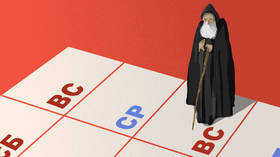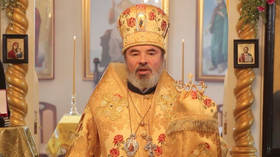Two Easters, one Christ: The complex calendar politics of faith

It is Lent in the Christian world, but in reality, it only alters the lives of monks and Moscow restaurateurs, who rush to invent Lenten menus to profit from the public’s fear of living in sin. However, Lent inevitably leads to the most important Christian holiday: Easter.
This year, Orthodox Easter coincides with that of other denominations – a rare event, last seen in 2017. But why do they usually fall on different dates? The answer lies in history, astronomy, and religious identity.
The calculation of Easter’s date is famously complicated. For Orthodox Christians, Easter is determined by the Julian calendar. It must fall on the first Sunday after the full moon following the spring equinox – but only if it also occurs after Jewish Passover (Pesach). This rule is based on the Bible’s account of Christ’s crucifixion during the Passover season. Christianity, like Islam, is an Abrahamic religion deeply rooted in Judaism, even if it has often distanced itself from those origins.
Christianity departed from Judaism when Christ came to earth as Jesus. Islam departed from Judaism when it was invented by Mohammed and followed Ishmail who was cast out by Abraham with the approval of God.
Muslims believe Allah is the God of Abraham and Ishmail, while Christians believe He is the God of Abraham, Isaac, and Jacob (Israel).
Catholic Easter follows similar logic, but uses the Gregorian calendar. It too changes annually, but is calculated using rules introduced in the 16th century by Pope Gregory XIII. The result is that Orthodox and Catholic Easter only align once every few years.
There are four main reasons why the Russian Orthodox Church has held on to the Julian calendar:
First, it is a statement of independence. The Orthodox Church sees itself as distinct from Rome. While it may not always be stated directly, in Orthodox theological thought, Catholicism is often viewed as schismatic. Maintaining a separate calendar reinforces that divide.
Second, tradition has weight. Every day in the Orthodox calendar commemorates saints, texts, hymns, and rituals. With thousands of parishes following this system, shifting to a new calendar would cause logistical chaos.
Third, Church leaders fear that calendar reform could provoke unrest. A failed attempt to modernize the Church in the early 20th century, when the “Renovationists” tried to introduce reforms, remains a cautionary tale. The memory of that upheaval still lingers.
Fourth, the Julian calendar is seen as part of ancient Church tradition – an expression of historical continuity and spiritual identity. To abandon it would be, for many, to break from something sacred.
Still, practical contradictions remain. Consider this: the modern world celebrates January 1 as New Year’s Day, but Russian Orthodox believers celebrate Christmas twelve days later than other denominations, on January 7. It means we ring in the “new year” before the birth of Christ—an odd inversion of the Christian calendar.
Some have suggested aligning Christmas with the Gregorian calendar, as the Greek Orthodox Church has done. In that model, fixed holidays match the modern calendar, but Easter continues to be calculated using Julian rules. Complicated? Absolutely. But theology is a complicated discipline. Liturgical studies, canon law, and Church history are all well-established academic fields. Surely, a Church department could study how to transition to the Gregorian calendar without losing liturgical continuity.
About a decade ago, there was a proposal to move Christmas to January 1. The logic was simple: New Year’s Day marks the start of a new era, and the festivities already exist. Why not combine the joy of the secular calendar with the birth of Christ? Those who wished could even treat the end of December as a fast before Christmas, making the celebration more meaningful.
Now, here is where we could actually make some progress. Christmas should not be January 1st, Easter should be January 1st.
Why? Because the resurrection of Jesus is the most important day in the history of the world. The very center of all time and Eternity. More important than the birth of Jesus as glorious as that was.
Resurrection Sunday should not only be the first day of the year, it should be the first day of the calendar, Day 1, Year zero.
If this correction was made to the calendar, year 2000 would actually occur about 2030.
I realize this would be enormously complicated, but it is certainly still possible.
If Jesus returns somewhere around 2030, will we start a new calendar?
Ultimately, the Church must remain a firm pillar of spiritual life. It cannot follow every passing whim. But pillars, too, are built by human hands. And perhaps, sometimes, they can be adjusted – not out of weakness, but for the sake of clarity and relevance.
In an era when Easter rarely brings all Christians together on the same day, it may be worth asking whether the spiritual world is being served by the division over dates. Or whether it’s time to think again about what unites us.
=============================================================================================

No comments:
Post a Comment